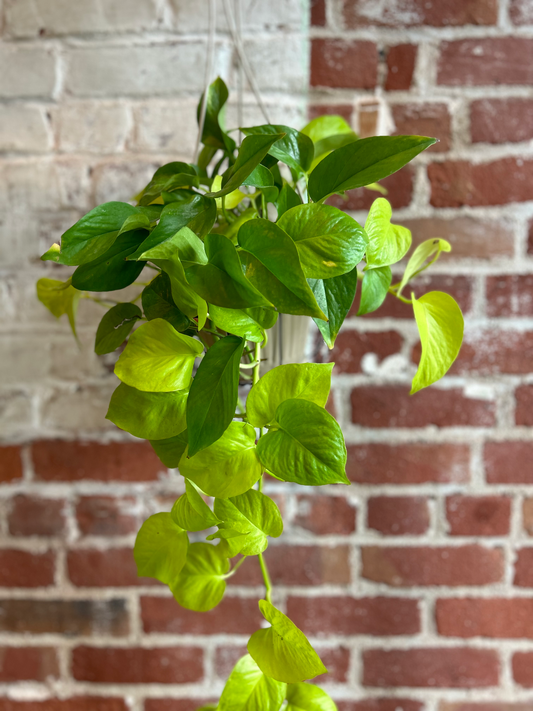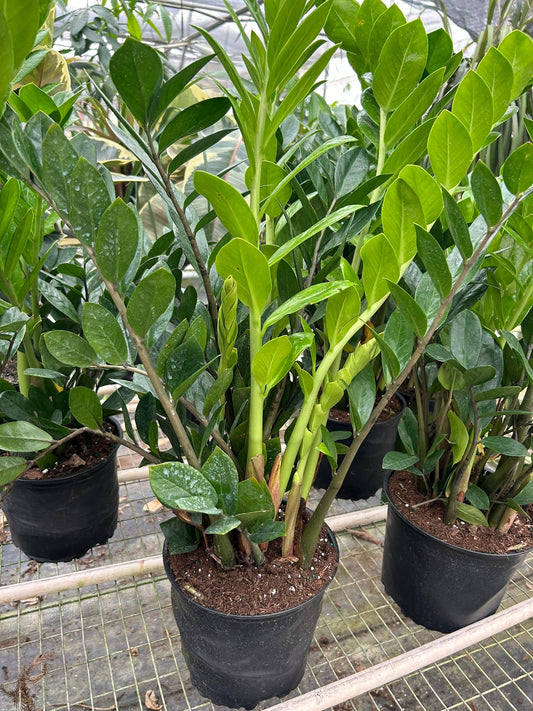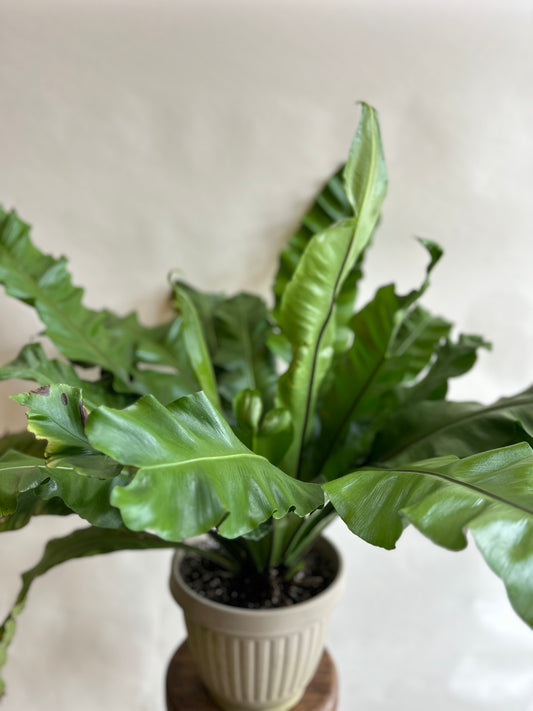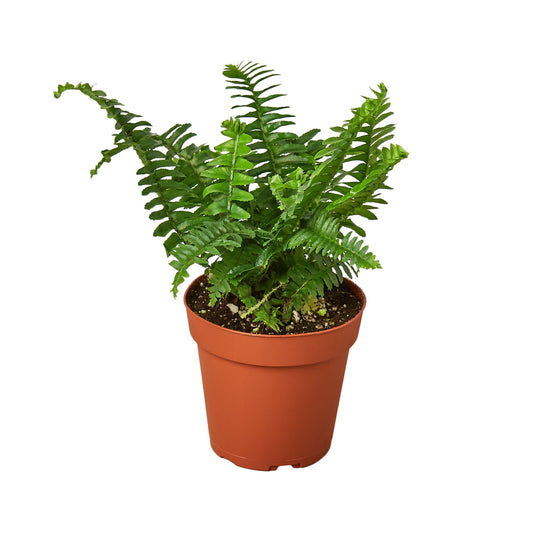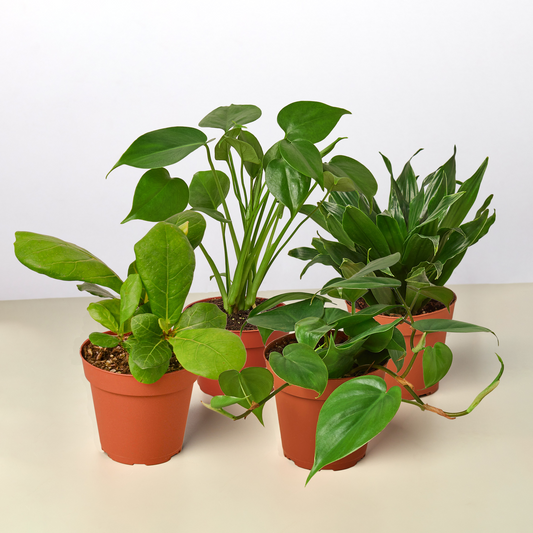How to Grow and Care for Philodendron Gloriosums
Cafe Planta Team
If you're a fan of houseplants, you've probably come across the Philodendron Gloriosum at some point. This plant is a favorite among plant lovers for its striking, heart-shaped leaves and velvety texture. It's the kind of plant that makes a statement in any room, drawing attention with its bold foliage. But as beautiful as it is, the Philodendron Gloriosum does require some specific care to thrive.
This article will guide you through everything you need to know about growing and caring for a Philodendron Gloriosum. From understanding its basic needs, like lighting and watering, to mastering the art of propagation, I've got you covered. So, grab a cup of coffee or tea, and let's get into the details of making your Philodendron Gloriosum the pride of your plant collection.
Understanding the Philodendron Gloriosum
First, let's get to know this stunning plant a bit better. The Philodendron Gloriosum is a creeping terrestrial plant native to Colombia, which means it grows horizontally across the ground rather than climbing like many of its relatives. The leaves can grow quite large, often reaching up to 36 inches in length, and are characterized by their deep green color and prominent white veins.
Interestingly enough, the Gloriosum is not just a looker; it's also a relatively slow grower. This means you won’t have to worry about it taking over your living space overnight. However, patience is key here, as its majestic leaves take time to develop to their full potential.
In terms of its place in the plant family, the Philodendron Gloriosum is part of the Araceae family. It's closely related to other popular houseplants like the Monstera and the Alocasia. If you're already familiar with these plants, you'll find some similarities in care, though the Gloriosum has its unique quirks.
Light Requirements
When it comes to light, the Philodendron Gloriosum is a bit of a Goldilocks plant—it wants just the right amount. Too much direct sunlight can scorch its beautiful leaves, while too little light can stunt its growth. So, what's the ideal setup?
A bright, indirect light environment is perfect for this plant. Think of a spot where it can enjoy the glow of the sun without being in its direct path. A north or east-facing window often works well, offering gentle morning light without the harsh afternoon rays. If your home has limited natural light, consider using a grow light. These can be a lifesaver during the darker months or in rooms that just don’t get enough daylight.
While it's important to provide sufficient light, don't stress if your Gloriosum isn’t in a perfectly lit spot 100% of the time. Plants, much like us, can adapt to their surroundings within reason. Just keep an eye on its leaves; if they start to yellow or look a bit sad, it might be time to reassess the lighting situation.
Watering Tips
Watering a Philodendron Gloriosum can feel a bit like a balancing act. Too much water and you're looking at root rot, too little and your plant will be parched. The goal is to keep the soil consistently moist but never soggy.
The best way to approach watering is to let the top inch or two of the soil dry out before watering again. This usually means a once-a-week watering schedule, although this can change based on your home’s humidity, temperature, and the season. During the growing months of spring and summer, your plant will likely need more frequent watering compared to the cooler, dormant months of fall and winter.
A handy tip is to use a moisture meter. This little device takes the guesswork out of watering by giving you a reading of the moisture level in the soil. If you prefer going by feel, stick your finger into the soil about an inch deep to check for moisture. If it feels dry, it's time to water.
Soil and Potting
The right soil is crucial for the health of your Philodendron Gloriosum. This plant thrives in a well-draining soil mix that retains some moisture but doesn't become waterlogged. A mix of peat moss, perlite, and orchid bark usually does the trick. The peat moss retains moisture, the perlite adds drainage, and the orchid bark provides structure.
When it comes to potting, choose a container with drainage holes. This helps prevent excess water from sitting at the bottom, which can lead to root rot. Terra cotta pots are a popular choice because they allow for some moisture evaporation through the pot itself, which can be helpful if you're prone to overwatering.
As your Gloriosum grows, you'll eventually need to repot it. Signs that it's time for a new home include roots growing out of the drainage holes or the plant appearing top-heavy and struggling to stand upright. Typically, repotting every two to three years is sufficient, but this can vary based on your plant's growth rate.
Fertilizing Your Philodendron Gloriosum
Fertilizing is like giving your Philodendron Gloriosum a little extra boost to keep it healthy and growing. During the growing season, which is usually spring and summer, a balanced, water-soluble fertilizer can be applied every four to six weeks. Look for a fertilizer with equal parts nitrogen, phosphorus, and potassium, or something close to a 20-20-20 ratio.
Be cautious not to over-fertilize, as this can lead to salt build-up in the soil and damage the roots. If you notice browning leaf tips, it might be a sign that there's too much fertilizer. In this case, scale back the frequency or dilute the fertilizer to half strength.
During the fall and winter months, when the plant's growth naturally slows down, you can reduce or even pause fertilizing altogether. This allows the plant to rest and gears it up for a vigorous spring comeback.
Humidity and Temperature Needs
Coming from the tropical regions of Colombia, the Philodendron Gloriosum loves a humid environment. Ideally, you want to aim for humidity levels of 60% or more. If your home is on the dry side, especially during winter, consider using a humidifier. Alternatively, placing the plant on a pebble tray with water can help increase local humidity around the plant.
Temperature-wise, these plants prefer to be kept in a range between 65°F and 80°F. They don't do well in temperatures below 60°F, so keep them away from drafty windows or doors during the colder months. Similarly, avoid placing them near heat sources which can dry the air and scorch the leaves.
If you notice the leaf edges turning brown or crispy, it could be a sign that the air is too dry or too hot, so adjust your environment accordingly.
Propagation Techniques
Propagating your Philodendron Gloriosum is a rewarding way to expand your plant collection or share with friends. The most common method is by stem cuttings.
Here's a simple step-by-step process:
- Find a healthy stem with at least one node and a leaf.
- Using a sterilized knife or scissors, cut the stem just below the node.
- Allow the cutting to callous over for a day or two to prevent rot.
- Place the cutting in water or directly into a potting mix, keeping the node buried.
- If in water, change the water every few days until roots develop, then transfer to soil.
- Keep the cutting in a warm, humid environment to encourage rooting.
Patience is key here, as it can take several weeks for roots to develop. Once the roots are a few inches long, you can pot the cutting in a permanent container.
Common Pests and Problems
Like any houseplant, the Philodendron Gloriosum can occasionally run into pests or problems. Common issues include spider mites, mealybugs, and scale. These pests can be managed with regular checks and treatments.
For spider mites, a gentle spray of water can dislodge them, or you can use insecticidal soap. Mealybugs can be removed with a cotton swab dipped in alcohol. Scale insects may require a bit more effort, often needing to be manually scraped off with a fingernail or a gentle brush.
Another common problem is brown leaf tips, which usually indicate low humidity or over-fertilization. Adjusting these conditions should help your plant bounce back.
Creating a Plant-Friendly Space
Now that you know how to care for your Philodendron Gloriosum, let's talk about how to make it a part of your home decor. With its large, dramatic leaves, this plant can be a centerpiece in any room. Consider placing it in a spot where it can be admired, like a living room or entryway.
Pair it with other plants that have contrasting shapes or colors for a visually interesting display. For example, the delicate leaves of a fern or the upright structure of a snake plant can complement the broad, velvety leaves of the Gloriosum.
Don’t be afraid to experiment with different decorative pots or stands to elevate your plant and make it a true part of your home’s style. The Philodendron Gloriosum is a statement piece, so let it shine!
Final Thoughts
Caring for a Philodendron Gloriosum can be a fulfilling experience, especially when you see those stunning leaves grow and thrive. Remember, it's all about finding that balance in light, water, and humidity to keep your plant happy and healthy.
At Cafe Planta, we’re here to support you on your plant journey. Whether you're looking for new houseplants, stylish pots, or plant-themed apparel, we’ve got you covered. If you have any questions, feel free to email us or reach out on Instagram. We’re excited to help you create a thriving plant collection in your home!


